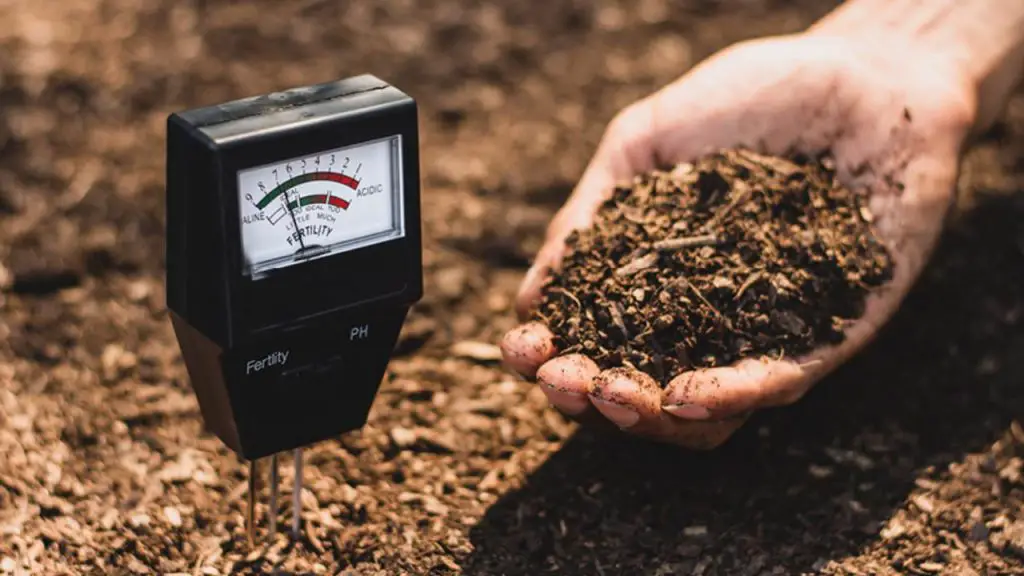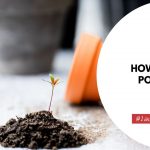Potting soil is a mixture of organic and inorganic materials that provides the nutrients needed for plants to grow. Plants need the right balance of different chemicals to thrive, and soil pH is an important measure of how acidic or alkaline a potting mix is.
But how to lower soil pH in potted plants? The correct pH level will help your plant get the nutrients it needs from the potting mix and prevent it from being toxic to the plant. Soil pH can vary between acidic (less than 7) and alkaline (greater than 7). Neutral soil has a pH of about 6.5.
Most plants prefer slightly acidic soil, with a pH between 5 and 6.5. Some plants, such as azaleas, blueberries, and hydrangeas, have more specific requirements for their soil pH in order to thrive.
Why Does Soil pH Matter?

The pH of the soil affects the availability of nutrients for your plants. If the soil’s pH is too acidic or alkaline, your plants may have trouble absorbing nutrients from the soil, which can affect their growth and yield. If you have a specific type of plant, you’ll want to make sure you have the right pH balance in your soil.
Certain plants thrive in more acidic soil, while others grow best in more alkaline soil. When growing specific plants, such as blueberries, it is especially important to monitor and adjust soil pH as needed. For example, blueberries thrive in acidic soil with a pH between 4.5 and 5.5.
Soil that is too alkaline will prevent the blueberry plant from getting the nutrients it needs to thrive. On the other hand, if the soil is too acidic, the plant may not be able to get enough nutrients from the soil and will also suffer. The ideal pH level for blueberries is critical to their successful growth.
How to Lower Soil pH in Potted Plants?
In order to lower the pH in a pot with soil, you will need to add something to it. There are a number of things you can use to do this, including compost, peat moss, powdered sulfur, or leftover coffee grounds. These items will lower the pH of the soil because they are more acidic than potting soil.
Soil pH can also be lowered by adding an acidic fertilizer to the soil. Choose a fertilizer labeled as “slightly acidic” or “slightly alkaline”. Another way to lower the pH in your soil is by watering the pot with a solution of water and a very small amount of muriatic acid.
1. Mix Compost with Soil
Compost is a type of soil fertilizer that can be mixed with your current potting soil to lower the soil pH. Compost is a mixture of decaying organic matter, and it’s often used as an organic fertilizer for gardens. Adding compost to your potting soil will help improve the health of your plants by providing them with nutrients and beneficial microbes.
The best way to add compost to your potting soil is to mix it together before filling the pot with soil. You can also add compost after filling your pot with soil, but it’s not recommended because you risk creating anaerobic conditions in your pot.
2. Acidic Fertilizer
If you need to lower the pH of your potting soil, you can add an acidic fertilizer to the soil. Choose a fertilizer labeled as “slightly acidic” or “slightly alkaline”. Ensure not to overfeed your plants, as this can negatively affect their growth.
Keep in mind that adding fertilizer is not the same as changing the pH of the soil. Fertilizer contains nutrients but does not contain the soil nutrients that affect pH. So, you can add fertilizer to your soil without changing its pH.
3. Powdered Sulfur
Sulfur is a naturally occurring mineral that can be added to your potting soil to help lower its pH. Sulfur is naturally acidic, so adding a small amount to your potting soil will help lower its pH. Be aware that too much sulfur can have a negative effect on your plants, so be careful when adding it to your potting soil.
Sulfur can be purchased in a powdered form online or at gardening stores. Add the recommended dosage to your potting soil and mix it well before filling your pots with soil.
4. Use Peat Moss
Peat moss is an organic soil amendment that can be used to lower the pH in potting soil. It is naturally acidic, so it can help to quickly lower the pH in your potting soil. Adding peat moss to your potting soil will also help improve its texture and provide your plants with organic matter.
Peat moss can be purchased in bags at gardening stores or online. You can add peat moss to your potting soil by mixing it in before filling your pots with soil or adding it after filling your pots.
5. Use Leftover Coffee
Leftover coffee grounds naturally have a low pH, and they can be used to lower the pH in potting soil. Adding coffee grounds to your potting soil will also provide your plants with organic matter.
Before adding coffee to your soil, you may want to soak the coffee grounds in water to draw out some of the acids in them. You can add coffee grounds to a potting soil by mixing them in before filling the pot with soil or adding them after filling a pot with soil.
Conclusion
The pH of potting soil can vary depending on the type of soil you choose. Most potting soils have a pH of between 6 and 7, which is close to neutral soil. Some plants thrive in slightly acidic soil, while others do best in more alkaline soil.
To make sure your potting soil is at the right pH, you can add things to it, like compost and peat moss. It is important to monitor the pH in your potting soil to make sure it stays at the right level.
Soil pH can change over time, especially if you use fertilizer. It can take a few months for the soil to reach a new pH after you make a change. Be sure to check the soil pH in your pots every few months to make sure it is at the right level for your plants.
Additional Contents



